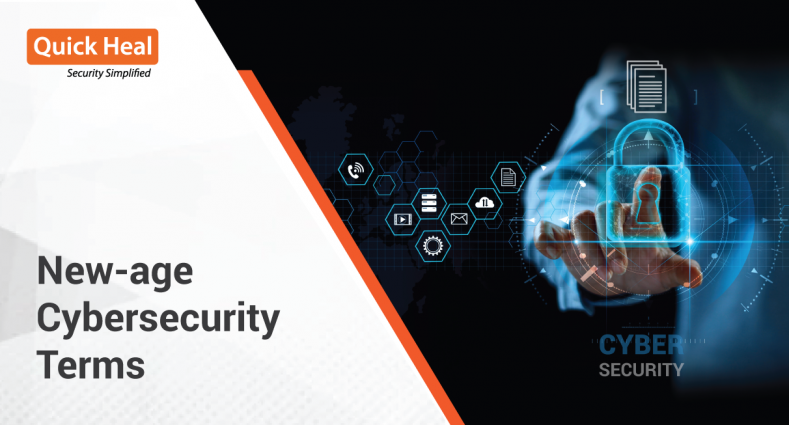Your guide to new-age cybersecurity terms

Like every other sector, cybersecurity has its own lingo. Often, it can be difficult for us users to understand the nuances. If jargon and long lists of indecipherable acronyms are frustrating you, we’re here to keep you updated with the latest lingo in the cybersecurity world.
Keep in mind though, that cybersecurity is a rapidly evolving domain. New threats get discovered every single day and new terms are used to describe them. For the purpose of this article, we’ll try to shed light on some of the newer terms that have come up in the last few years. For a more detailed dictionary, you can refer to our article on the A to Z dictionary of cybersecurity terms.
Catfishing
A relatively modern term in the cybersecurity world, catfishing refers to the creation of fake identities on social networking services to target specific victims for abuse or fraud. This technique is commonly employed on dating websites to embroil victims in romance scams.
There are many dangers to catfishing as it is specifically aimed at the emotions of victims. To protect against catfishing, the only advice is to remain cautious, especially on dating websites, about the people who are talking to. Only agree to meet someone after you have fully verified their identity.
Deepfakes
Deepfakes are a dangerous new creation in a world where fake news has become ubiquitous. Simply put, deepfakes are digitally manipulated videos or audios which look extremely authentic when they are not. Machine learning and artificial intelligence are leveraged to manipulate visual/audio content to make the end result look extremely authentic.
To get a sense of how real they look, check out this fake Mark Zuckerberg video created by two artists and uploaded on Instagram. Another deepfake video of Barack Obama created by BuzzFeed also went viral, showing the former US President using profanity and warning viewers to not trust anything they see on the Internet.
Sanjay Katkar, Joint Managing Director, Quick Heal, referred to deepfakes among other key threats to look out for in 2020.
Cryptojacking
Cryptojacking is a type of malware that acts very differently from other types of malware. It does not capture/steal data or cripple a system – in fact, it tries very hard to stay undetected. The only way you’ll figure out you’re suffering a cryptojacking attack is when you observe that your system is being very slow.
Why does that happen? Because the malware installed on your system is hijacking all your system’s resources to mine cryptocurrency. Cryptojacking is a favorite threat method for malicious threat actors as they can surreptitiously hijack unsuspecting users’ systems for their own benefit.
Botnets
Botnets are essentially a network of compromised devices, each of which is called a “bot”. They are all controlled remotely by a third party through command and control (C&C) software. As you can guess, entire networks of computers can be extremely useful for a hacker – they can be used to coordinate and launch attacks, specifically Distributed Denial of Service (DDoS) attacks which rely on sheer numbers of attacks to wear down the target.
Whatever be the threat, you can be sure that Quick Heal offers you the best protection against cyber threats with its array of solutions for your computer or mobile phone. Check our range of products here to see what solution fits your needs.
No Comments, Be The First!